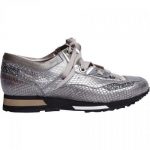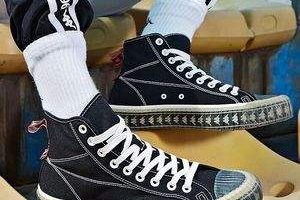Introduction
Shoes, often taken for granted in the modern world, are more than just footwear in many African cultures. They are a reflection of history, heritage, and identity. The diverse continent of Africa boasts a rich and varied shoe culture that encompasses a wide range of styles, materials, and designs. This article delves deep into African shoe culture, exploring its history, the preferences of modern locals, and the evolving trends in the world of African footwear.
A Glimpse into the History and Inheritance of African Shoes
Shoes in Africa have a long and storied history, dating back to ancient times. The continent’s diverse landscapes, climates, and cultures have given rise to an impressive array of footwear styles. These shoes have not only served practical purposes but have also played a significant role in cultural and social contexts.
-
Pre-Colonial Times: Before the colonial era, African shoes were crafted using indigenous materials such as leather, woven fibers, and plant-based materials. These materials were not only abundant but also adapted to the local environment. The design and style of shoes varied greatly from region to region, reflecting the unique needs and cultural identities of each community.
-
Colonial Influence: With the arrival of colonial powers, there was a shift in the production and consumption of shoes. European footwear styles began to influence African fashion. This led to the decline of traditional shoe-making practices in some regions, although they persisted in others.
-
Post-Independence Renaissance: In the post-independence period, there has been a resurgence of interest in traditional African shoes. Local artisans and designers have worked to revive and celebrate these heritage designs, incorporating them into modern fashion.
Contemporary Shoe Styles in Africa
The styles and types of shoes preferred by modern Africans are a reflection of both tradition and globalization. Let’s take a closer look at the various shoe styles popular among different age groups.
-
Local Elderly and Children: In many African communities, the elderly and children still favor traditional footwear styles. These may include leather sandals, woven straw shoes, and beaded slippers. These styles are not only comfortable but also culturally significant.
-
Young Adults: The younger generation in Africa often combines traditional elements with contemporary fashion trends. Sneakers, both local and international brands, are highly popular. Additionally, African print fabric shoes have gained popularity, providing a unique fusion of tradition and modernity.
Local and International Shoe Brands
Africa is home to a growing number of indigenous shoe brands that cater to local tastes and needs. These brands have gained recognition for their quality and innovation.
-
Oliberte: A proudly African brand, Oliberte specializes in handcrafted leather shoes and accessories. With a strong commitment to fair labor practices and sustainability, they have made their mark in the global market.
-
House of Tayo: This brand is known for its fusion of traditional African fabrics and modern designs. Their African print sneakers have gained popularity among young consumers.
-
Bata: While originally founded in Europe, Bata has a strong presence in Africa and is known for offering affordable and durable footwear to local communities.
Global Shoe Brands in Africa
The global footwear industry has a significant presence in Africa, offering a wide range of choices to consumers. Major international brands like Nike, Adidas, and Puma have established a foothold in urban centers, catering to sports and lifestyle needs. Their marketing campaigns often feature local sports icons and cultural references, which resonates with African consumers.
Emerging Trends in African Shoe Culture
African shoe culture is not static but continues to evolve. Several noteworthy trends are shaping the footwear landscape in the continent:
-
Sustainability: With increasing awareness of environmental issues, there is a growing demand for sustainable and eco-friendly shoes. Local brands are incorporating sustainable materials and practices into their production processes.
-
Customization: Consumers are seeking personalized and unique footwear. Some local artisans and brands offer customization services, allowing customers to choose their preferred designs, colors, and materials.
-
Digital Influence: The rise of social media and e-commerce has transformed how African consumers discover and purchase shoes. Online platforms and influencers play a significant role in shaping fashion choices.
Conclusion
African shoe culture is a vibrant and dynamic aspect of the continent’s identity. From traditional, handcrafted shoes to global brands and emerging trends, it is a reflection of the fusion of heritage and modernity. As African communities continue to celebrate their rich history and diverse culture, the world can expect to see exciting developments in African shoe culture. From the comfort of traditional leather sandals to the style of modern African print sneakers, the continent’s shoe culture is here to stay, offering a window into Africa’s past, present, and future.
















Add Comment